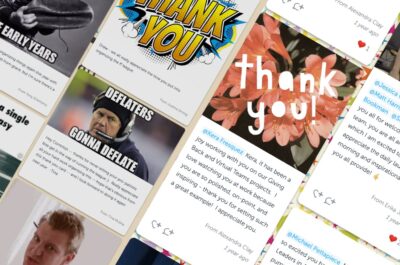Employee recognition has long been a staple of workplace culture. From employee of the month perks, shoutouts in company newsletters, or the classic catered lunch, most companies have built their recognition practices around these long-standing traditions.
However, as the workplace welcomes more Gen Z employees—born roughly between 1997 and 2012—they also welcome a digitally-native, values-driven generation who are redefining what appreciation means in the workplace.
Let’s dive into how Gen Z is changing the game of employee recognition, talk about why traditional methods may not work, and explore ideas for a recognition program that resonates with this generation.
What Gen Z Values at Work
To understand how Gen Z is redefining employee recognition culture, it’s important to understand who they are and what makes them tick. While we don’t want to lean too hard into generational stereotypes, there are clear trends in how Gen Z views work and workplace culture, especially when it comes to feeling seen and valued. These trends mean that their needs differ from those of their Millennial, Gen X, or Boomer colleagues.
1. Digital-First, Always Connected
Gen Z is the first generation to grow up entirely in a digital world. They’re used to constant communication, quick feedback loops, and personalized experiences from social media, streaming services, and online communities. Because they are used to quick and easy feedback, this translates into them seeking more frequent and personalized recognition in the workplace.
Additionally, being digitally native means that they will prioritize a workplace that utilizes the conveniences of technology. This will be no different in how they receive appreciation, making employee recognition software increasingly vital in the workplace.
2. Values-Driven and Purpose-Oriented
While previous generations may have prioritized job security or salary, Gen Z tends to seek purpose, alignment with values, and authenticity in their workplace. They want to be part of organizations that value diversity, inclusion, sustainability, and ethical leadership.
Gen Z highly values knowing that their contributions make a difference. They want to see how their role helps the greater team or organization. Their purpose-driven nature also means that they want to know the “why” behind their work and the decisions made within the company.
Ultimately, they want their work to mean something. They’re not motivated by pizza parties or casual Fridays if their daily efforts feel disconnected from a larger mission.
Rethink recognition
Adaptable, authentic employee recognition that’ll resonate with Gen Z (and every other generation).
3. Craving Connection and Community
Despite being digital natives, Gen Z craves meaningful human connection, perhaps more than any generation before them. Because they grew up in a world where communication with peers is easily accessible, many Gen Z workers actively seek out this same sense of community, collaboration, and relationships at work.
4. Real-Time, Ongoing Feedback
Gen Z grew up in a world of constant feedback—likes, comments, and messages that happen in real time. Annual reviews and long waits for recognition feel disconnected and impersonal. They crave frequent, in-the-moment appreciation that reflects the pace and immediacy of the digital world they know.
5. Autonomy
Gen Z values independence and flexibility at work. Because they grew up with unlimited access to information, they know how to sift through and collect the necessary data to make sensible decisions. Therefore, they only need the space and mentorship to experiment with their ideas.
Additionally, they want to be trusted to manage their time, choose how they work best, and contribute in ways that feel personally fulfilling. When it comes to recognition, this means they value acknowledging not just results, but how individuals take initiative, solve problems, and innovate.

Why Traditional Recognition Falls Short for Gen Z
Let’s face it: a gold watch or an employee of the month parking spot doesn’t mean much when your Gen Z employees are craving authenticity, visibility, and a deeper sense of purpose. Unfortunately, because traditional recognition methods focus more on “being the best” vs. valuing each individual’s unique contributions, they just don’t work the same for Gen Z.
Here are other reasons why traditional employee recognition programs may not work with this generation:
1. Infrequency of Formal Recognition
Annual service awards or milestone anniversaries feel outdated to a generation used to real-time feedback and instant digital interactions. Waiting a year (or even a month) to receive appreciation can feel out of sync with how Gen Z communicates and learns. Leaving these methods feeling out of touch and unmotivating.
2. Generic, One-Size-Fits-All Rewards
Gen Z wants to feel seen as individuals. A generic email or mass “thank you” doesn’t carry the same weight as a personalized message or a recognition that reflects their unique contributions. When employee appreciation is generic vs. personalized, it will be received as disingenuous and therefore, fall short of providing intended benefits and impact.
3. Recognition Without Context
Appreciation that doesn’t connect to a broader purpose or company values can fall flat. A trophy for “Employee of the Month” feels meaningless if it’s not tied to real impact, team outcomes, or personal development.
4. Top-Down Only Praise
Recognition that only comes from managers or executives can seem disconnected. Gen Z wants community, which means there is a greater value in promoting peer-to-peer recognition and crowdsourced appreciation from coworkers who directly see their work.
The Employee Recognition Gen Z Actually Wants
So, what do effective employee recognition programs look like for Gen Z employees? It looks like timely, authentic, and purpose-driven recognition that builds the workplace community. Here are some recognition approaches they want that align with their preferences and expectations.
1. Digitize with an Employee Recognition Platform
Gen Z expects everything—work, communication, even appreciation—to live in the digital world. This generation was raised on smartphones, apps, and instant feedback, so it’s no surprise they want recognition that’s just as seamless, social, and tech-enabled.
Enter an employee recognition platform.
Not only are these platforms convenient—they’re essential for creating the kind of recognition culture Gen Z wants to engage with. Tools like Kudoboard let employees give and receive recognition in real time, often with fun, interactive features such as emojis, GIFs, photos, and value-based shoutouts. It’s recognition that feels modern, accessible, and personalized, not like an outdated certificate buried in a drawer.
More importantly, these platforms meet Gen Z where they are—in Slack channels, mobile apps, and digital dashboards. They make it easy to celebrate wins publicly, share peer appreciation, and tie recognition back to company values.
2. Frequent and Real-Time Recognition
As mentioned previously, a monthly or quarterly review is simply too long for Gen Z to get feedback. For the appreciation to be most effective, it needs to be timely.
So, instead of waiting for formal employee performance reviews or end-of-year awards, build a culture of ongoing appreciation. Whether it’s a quick Slack message, a shoutout during a team stand-up, or a digital recognition board, Gen Z thrives on in-the-moment feedback.
3. Encourage Peer Recognition
Gen Z wants recognition from the people they collaborate with daily, not just their supervisors. Peer-to-peer recognition reinforces team cohesion and helps employees feel seen by those who understand their contributions most closely.
When an employee recognition program harnesses the power of peer-to-peer recognition, it builds a workplace culture that is supportive, engaged, and connected. They build the community Gen Z craves.

4. Recognition Tied to Impact and Values
Rather than generic praise like “Great job on the report!”, connect recognition to tangible results or meaningful behavior. For example, a comment like, “Your analysis helped us pivot our strategy in the client presentation—huge win!” connects their action to a direct result. Feedback like this demonstrates impact and reinforces behavior that aligns with company values.
5. Public and Shareable Moments
Gen Z grew up sharing milestones on social media, and they’re more likely to appreciate public recognition that others can celebrate too. That doesn’t mean spotlighting them in a cringey way—it means celebrating contributions in a format that feels natural, inclusive, and shareable. So, whether it is on an employee shout-out board or during a team meeting, this can be a great way to show gratitude.
6. Opportunities Over Objects
For a long time, employee appreciation meant giving people things—engraved plaques, gift cards, company swag, maybe a branded coffee mug for five years of loyalty. While well-intentioned, this kind of recognition often falls flat for Gen Z. It’s not that they don’t appreciate a tangible reward—it’s that they value experiences and opportunities far more than stuff. So, forget the swag bag or commemorative plaque. Focus instead on forms of recognition that say, “We see your potential, and we want to invest in your growth.”
For Gen Z, that matters. They want recognition that helps them move forward in their careers, deepen their skills, and feel like valued contributors, not just recipients of swag.
7. Gamify
If there’s one thing Gen Z understands intuitively, it’s how gamification keeps people engaged. They’ve grown up with leaderboards, streaks, achievements, and points in nearly every digital environment—from fitness apps and social media to mobile games and education platforms. So it’s no surprise that when recognition in the workplace gets a playful, competitive edge, Gen Z pays attention.
Gamifying employee recognition doesn’t mean turning appreciation into a popularity contest—it means adding structure, visibility, and motivation to make recognition more engaging and fun. With the right balance, gamification can drive participation, highlight positive behaviors, and help create a stronger sense of community across the team.
Gamification taps into Gen Z’s preference for instant feedback, progress tracking, and social recognition—all while reinforcing a company culture of continuous recognition. And when used thoughtfully, it turns appreciation into something employees actively look forward to, rather than something reserved for formal events or top-down praise.
9. Provide a Choice of Rewards
When it comes to rewards, Gen Z isn’t interested in one-size-fits-all. This generation values personalization and autonomy, and that includes how they’re recognized. Instead of defaulting to a standard gift card or company-branded tumbler, give Gen Z employees the ability to choose their reward—something that aligns with their interests, goals, or lifestyle. Whether it’s a wellness stipend, tickets to a concert, a donation to a cause they care about, or time off to volunteer, offering options shows that you trust them to define what feels meaningful.
By offering choice and leaning into experiences, you make recognition feel not just appreciated, but empowering.

Creative Employee Recognition Ideas that Resonate with Gen Z
To truly connect with Gen Z employees, recognition needs to be creative, personal, and culturally relevant. Gone are the days when a quick “great job” in a staff meeting will suffice. This generation wants recognition that feels intentional and reflects how they actually work, communicate, and thrive.
Here are some modern, low-cost, high-impact recognition ideas that Gen Z will care about:
Win of the Week Shoutouts
Create a weekly tradition where team members highlight one standout contribution or win from a peer. These can be shared during team meetings, over Slack, or on a digital Kudoboard. It helps build a rhythm of appreciation and keeps everyone attuned to everyday excellence, not just big milestones.
Digital Shout-Out Walls
Set up a shared space—like a Kudoboard or dedicated Slack channel—where employees can drop praise and shoutouts. Keep it informal, fun, and ongoing. Doing so creates an informal recognition avenue for social recognition to build the sense of community that Gen Z values.
Storytelling Spotlights
Feature team members in monthly newsletters or blogs where they share their journey, recent projects, and personal insights. Spotlights can highlight the good things employees are doing while also fostering connection by helping peers get to know each other better.
Surprise Coffee or Lunch Drops
Recognize a team member with a surprise lunch delivery or coffee credit via a delivery app, especially after a tough sprint or successful launch. These small, thoughtful gestures go a long way in making someone feel seen.
Create and Share Recognition Reels
Use a tool like Canva or TikTok-style video editors to create quick reels celebrating individual wins or team efforts. Include photos, quotes, or short clips from peers. These can be shared during team meetings or posted to internal platforms for a fun, dynamic moment of recognition.
Growth Spotlights
Instead of just celebrating results, spotlight a team member’s personal growth or learning journey. Maybe they tackled their first project solo, led a meeting for the first time, or overcame a challenge. This kind of recognition shows that your company values effort and progress, not just perfection.
Recognition Pass-Along Awards
Think of a fun, symbolic item—like a mini trophy, plant, or even a silly hat—that team members can pass to each other weekly with a short explanation of why they’re recognizing someone. It adds a touch of humor and ceremony, which Gen Z tends to appreciate when done with sincerity.
Interactive Recognition Boards
Use interactive dashboards or software tools that allow employees to not just give appreciation, but also comment, like, or react to shoutouts from others. This adds a social dimension that mirrors Gen Z’s digital experiences and encourages more employee engagement across the team.
Use a Bonus Platform
Use employee appreciation software that gives employees points that they can redeem for rewards they want. It’s even better if the platform gives the option for employees to award bonuses to peers they want to recognize.
Team-Building Experiences
Build community and show appreciation by hosting team-building experiences. From hosting a paint night to a company barbeque, these experiences can foster greater connection among teams and show gratitude by providing the experiences that Gen Z enjoys engaging in.
In the end, Gen Z isn’t asking for flashy gifts or rigid rituals. They want to feel genuinely appreciated in ways that reflect who they are and how they work. When recognition becomes interactive, values-driven, and human, it turns into something this generation truly rallies around.
How to Measure the Success of Your Employee Recognition Efforts
As you adapt your employee recognition programs to meet the needs of the incoming generation, it is important to ensure your recognition strategies are working. Here’s how:
Employee Recognition Software: The best way to measure the success of your efforts is through software dedicated to recognition. Many of these programs come with analytics that can help you gauge engagement and effectiveness without much added work on your part.
Pulse Surveys: Regular, short surveys can measure how often employees feel appreciated and whether they believe recognition is meaningful, authentic, and fair. Use questions that see what they value and make sure they align with the current recognition efforts.
Peer Recognition Metrics: If you implement a peer recognition platform, measure usage data like: How many recognitions are being sent? Are they evenly distributed across teams? Which values or contributions are most commonly recognized?
Retention and Performance Correlation: High recognition company cultures are often correlated with better employee retention and performance. Track how recognition trends relate to employee turnover, productivity, and internal promotions.
Qualitative Feedback: Don’t underestimate the power of a focus group or informal feedback session. Ask your Gen Z employees directly what kinds of recognition make them feel seen, supported, and motivated.

Read More: How to Measure Employee Recognition: 11 Key Metrics to Track
Final Thoughts: Employee Recognition That’s Built to Last
Gen Z isn’t rejecting recognition—they’re reimagining it. They want appreciation that feels personal, purposeful, and peer-driven. They value growth over gimmicks, impact over formality, and connection over ceremony.
The good news? Evolving your recognition culture doesn’t mean scrapping everything you’ve done before. It means adding authenticity, agility, and intention to your approach. When done right, this shift doesn’t just benefit Gen Z—it benefits the job satisfaction of every generation.
So start small. Use programs like Kudoboard to create more opportunities for authentic appreciation. Whether it’s celebrating milestones, birthdays, or everyday wins, you can build a company culture of connection that resonates with the next generation of talent.




